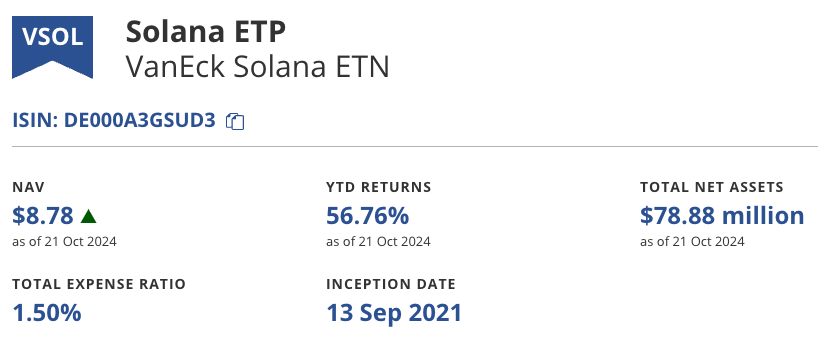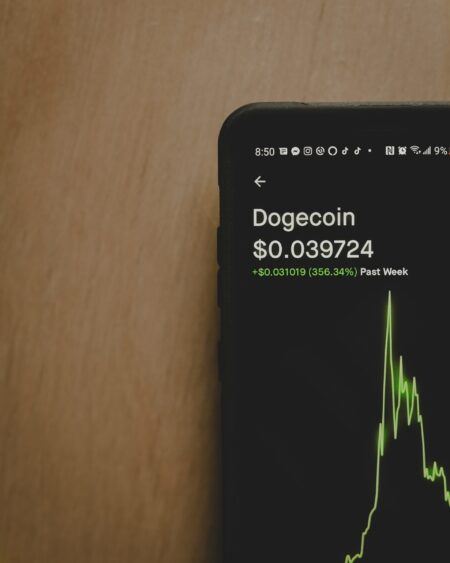The VanEck Solana ETN (VSOL) offers investors the opportunity to gain exposure to the Solana (SOL) blockchain, which is known for its high-speed transaction capabilities and scalability for decentralized applications. The ETN is fully collateralized with Solana, with the underlying SOL held in cold storage at a regulated custodian.
The ETN tracks the MarketVector Solana VWAP Close Index, which reflects the performance of Solana based on the volume-weighted average price. As of 21 October 2024, the VanEck Solana ETN has net assets valued at approximately $75.88 million. The product is structured to provide institutional investors with a secure and efficient way to invest in Solana without directly holding or managing the asset themselves.
Listed on several European exchanges, including Deutsche Börse Xetra, Euronext Paris, Euronext Amsterdam, and SIX Swiss Exchange, the ETN allows for easy access and trading during regular market hours. The ETN is domiciled in Liechtenstein, offering multi-jurisdictional regulatory oversight, though it is not UCITS compliant. Investors are subject to a total expense ratio (TER) of 1.50%, which covers management fees and other operating expenses associated with the ETN.

According to an announcement on the social media platform X by Matthew Sigel, Head of Digital Assets Research at VanEck, this product now offers staking rewards to investors across the European Union, allowing investors to receive SOL rewards that are automatically reinvested daily.
The VanEck Solana ETN reflects the staking rewards directly in the net asset value (NAV) of the product, leading to an increased amount of Solana (SOL) tied to each share. VanEck charges a 25% fee on staking rewards, a move similar to their Ethereum ETN update in April, which introduced staking rewards for Ethereum. In the U.S., however, crypto ETFs with staking rewards have yet to be approved by the Securities and Exchange Commission (SEC).
The VanEck Solana ETN enables investors to earn staking rewards automatically without requiring any active involvement. The staking process is fully non-custodial, ensuring that the SOL used for staking remains under the control of the custodian at all times. This eliminates any lending risks, as the SOL is never transferred out of the custodian’s cold storage, ensuring the security of the assets. Investors, regardless of when they purchased the ETN, benefit equally from the staking rewards, which are distributed proportionally after a 25% staking fee is applied.
The rewards, which include inflationary, MEV, and block rewards, are added daily to the ETN’s net asset value (NAV) at the end of each trading day. These rewards are generated by delegating the SOL to a validator, but control of the assets always remains with the custodian. The validator node receives rewards based on an epoch-by-epoch basis, and these are reinvested into the ETN, helping boost the overall performance of the product.
Investors retain the ability to buy, sell, or hold the ETN like any other exchange-traded product, ensuring full liquidity, despite the staking process. VanEck emphasizes that staking does not affect the redeemability of the ETN, even with the lock-up of the collateral for staking. The annual staking yield for Solana typically ranges between 7% and 9%, although this rate can vary based on several factors, including the number of validators on the network and demand for Solana transactions.
The non-custodial nature of staking means that the SOL always remains in cold storage, and no lending of assets takes place. Investors receive their net staking rewards, calculated after deducting the 25% staking fee, which are incorporated into the NAV daily. While staking rewards offer potential for additional income, they are not guaranteed, and the yield can fluctuate with changes in the network and broader market conditions.









